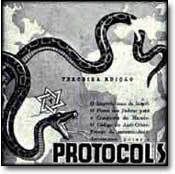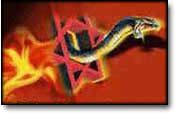Direct from your local Holocaust Industries Inc.:
Dr. Ralph Friedman has a photograph. It shows a covered pit, a mass grave. It was supposed to be his grave, too, as the 152nd victim of a Nazi massacre.
But Friedman, who was at that time about 12, rose from the dead out of that pit, with a shovel full of dirt.
In a desperate, defiant act, he flung the dirt into the face of one of the Nazi soldiers who had just executed his grandparents and cousins as well as his rabbi, neighbors and friends.
“He was cupping his hand to light a cigarette,” Friedman recalled, still seeing that Nazi soldier. “He had put the submachine gun on his shoulder. I took advantage of that moment.”
Friedman said he had not been shot with the other 151 because the Nazis wanted to give him a few more minutes to live in order to bury the bodies.
“I started to run into the woods,” he said. “I ran in a zigzag way, so they weren’t able to shoot me.”
 Friedman, a retired dentist, told me all this last week as we sat in the quiet and peaceful Hagaman Memorial Library in East Haven. He said he didn’t want to call attention to himself; he wants school kids to know about these horrible events of the Holocaust.
Friedman, a retired dentist, told me all this last week as we sat in the quiet and peaceful Hagaman Memorial Library in East Haven. He said he didn’t want to call attention to himself; he wants school kids to know about these horrible events of the Holocaust.
That’s why he spoke to students at East Haven High School last year about what he witnessed. Many of them wrote comments describing how moved and shaken they were.
“My cardinal objective,” he told me, “is to see if I can get to our next generation, boys and girls, so they will have some type of idea as to what was going on and what the human animal is capable of.”
Friedman had with him Allan Levine’s book, “Fugitives of the Forest,” detailing how some Jews survived those Nazi attacks.
“On Yom Kippur 1942, in a small village east of Vilna (Poland), Ralph F. was caught in a round-up of Jews,” Levine wrote.
The Nazis took the large group on a forced march to the outskirts of town. Levine wrote Friedman was “determined not to die in this mass grave.”
Friedman found his mother afterward in a farmer’s hut. They hid under the floorboards for five months. Friedman repeated a Hebrew prayer 10,000 times. “We lived only for the sake of hope.”
Finally, fearing the farmer was about to betray them, Friedman staggered out of the hut and later met Russian partisans who were fighting the Germans. He joined the resistance.
But there is something Levine did not include in his book, an image that has haunted Friedman to this day.
“A neighbor of mine was carrying her 3-month-old baby when the Nazis ordered people into the pit,” he said. “She wrapped up the baby and placed him between two trees, hoping they would have pity on him.
“But the baby began to cry and one of the murderers picked the baby up by one leg and walked over to the pine tree. And he went like this.”
Friedman swung his arm in quick, violent motions to show how the Nazi had smashed the baby into the pine tree.
“The tiny head just rolled off,” he said. “I saw this with my own eyes. It completely destroyed me. This terrible event shattered me beyond recovery.”
Then he showed me a photo: a pile of human legs from one of the labor camps. Friedman, who spent time in one of these camps, pointed at the legs and said, “This is what we ate.”
Pulling out a photo of a pile of human teeth from camp victims, Friedman said, “There’s no end to it.”
He said he wouldn’t be able to sleep that night after our talk because images of the pit were being rekindled. “All the pictures start coming back. I could describe the color of the clothing that some of the victims were wearing.”
He recalled one of the Nazi executioners. “He was eating a sandwich at the same time he was firing the submachine gun at the victims.”
But mixed with the images of horror is one of joy. “I had been told my parents were both killed. But one day when I was with the partisans in the forest, we heard some people approaching. A male voice said, ‘Don’t shoot!’”
“I had my trigger on; I said, ‘Walk out into the open.’ And there stood my mother in front of me and my father in front of me. I could not believe my eyes. I fell apart.”
Friedman began to cry, softly as he recounted this.
Again he pulled out the photo on which he wrote long ago, “a picture of my grave that I escaped from.” He took the photo himself after the war ended.
Offering me a second copy of the photo, he picked up a red pen and marked where that pine tree still stood.
As he told the students in that classroom, “Never again. Never again.”
http://www.nhregister.com/articles/2010/05/23/news/doc4bf88f59bcec1512567701.txt
Sunday, 23 May 2010
He saw horrors no human being should ever experience
Posted @
11:07
![]()
Subscribe to:
Post Comments (Atom)
![[9_10_s22.jpg]](https://blogger.googleusercontent.com/img/b/R29vZ2xl/AVvXsEjTXnQay9wzz0E6nVHrVhaHKoq_zYXDqZjijHlNDQzj90MZzInrCuVX4ciFYCiBfZ7lhlgr2bBhhnl7ddWbhdih5JbXjQYbA605TNyiq046bQqjG2A4S-nHTmh1VBTQSG6tmc23wq47QQ/s1600/9_10_s22.jpg)




No comments:
Post a Comment